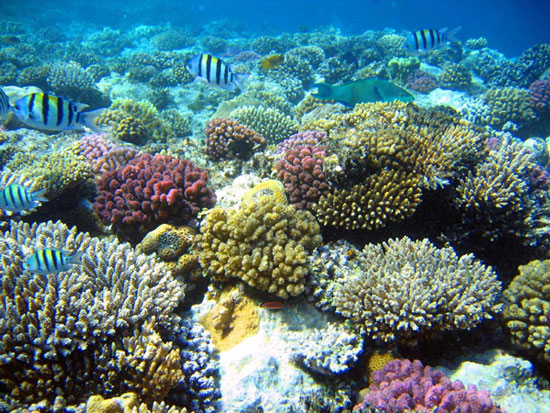Coral shields are resistant to ultraviolet rays
British scientists have discovered a mechanism to create sunburns for marine corals, which can be used as a sunscreen for humans and develop temperate crops in the tropics.
British researchers have discovered that coral shields can protect against harmful ultraviolet rays (UV). Dr. Paul Long, a 3-year lead researcher at Napier analyzed coral samples from Australian reefs, by collecting corals when exposed to the sun and discovering mechanisms. Production of sunscreen .
This mechanism is formed by the interaction between corals and algae living inside corals.'Algae have created compounds that move into corals, which are then changed into a sunscreen for the benefit of corals and algae,' Long said.

'Not only that, coral-eating fishes also benefit from this,' Long added.
This proves that sunscreens are formed through the food chain.
So scientists believe that the discovery could pave the way for a revolution in producing sunscreens with skin and eye protection drugs based on compounds found in corals.
Scientists say corals can create more than 20 sunscreen compounds.
Another important application of the study is being able to create sun-tolerant crops, boosting the world's food supply, through the addition of coral genes that can make plants Temperate, like wheat and potatoes, can thrive in the tropics.
- 5 ultraviolet environments much less expected
- How to deal ultraviolet rays in the hot season
- Things to know about ultraviolet (UV)
- Ultraviolet light from the sun causes DNA damage
- Use ultraviolet rays to avoid enemies
- Ultraviolet warning bracelet
- Why should I wear sunglasses
- NASA prepares to launch satellite observing the sun
- What really happened when we were sunburned?
- Tongue animals reflect ultraviolet rays threatening enemies
- UV rays kill cancer cells in mice
- Ways to protect the eyes in the hot sun
 Surprised: Fish that live in the dark ocean still see colors
Surprised: Fish that live in the dark ocean still see colors Japan suddenly caught the creature that caused the earthquake in the legend
Japan suddenly caught the creature that caused the earthquake in the legend A series of gray whale carcasses washed ashore on California's coast
A series of gray whale carcasses washed ashore on California's coast Compare the size of shark species in the world
Compare the size of shark species in the world